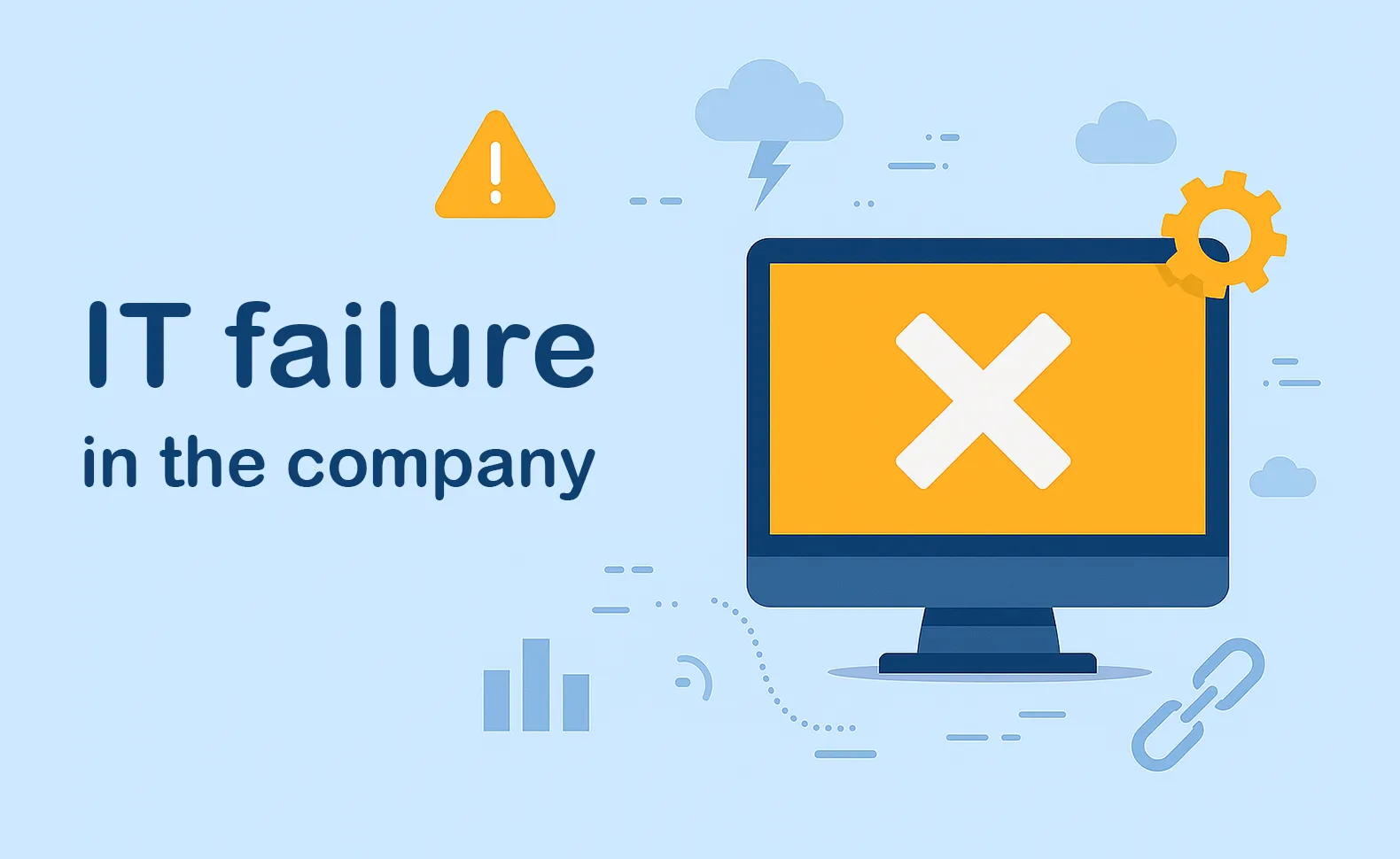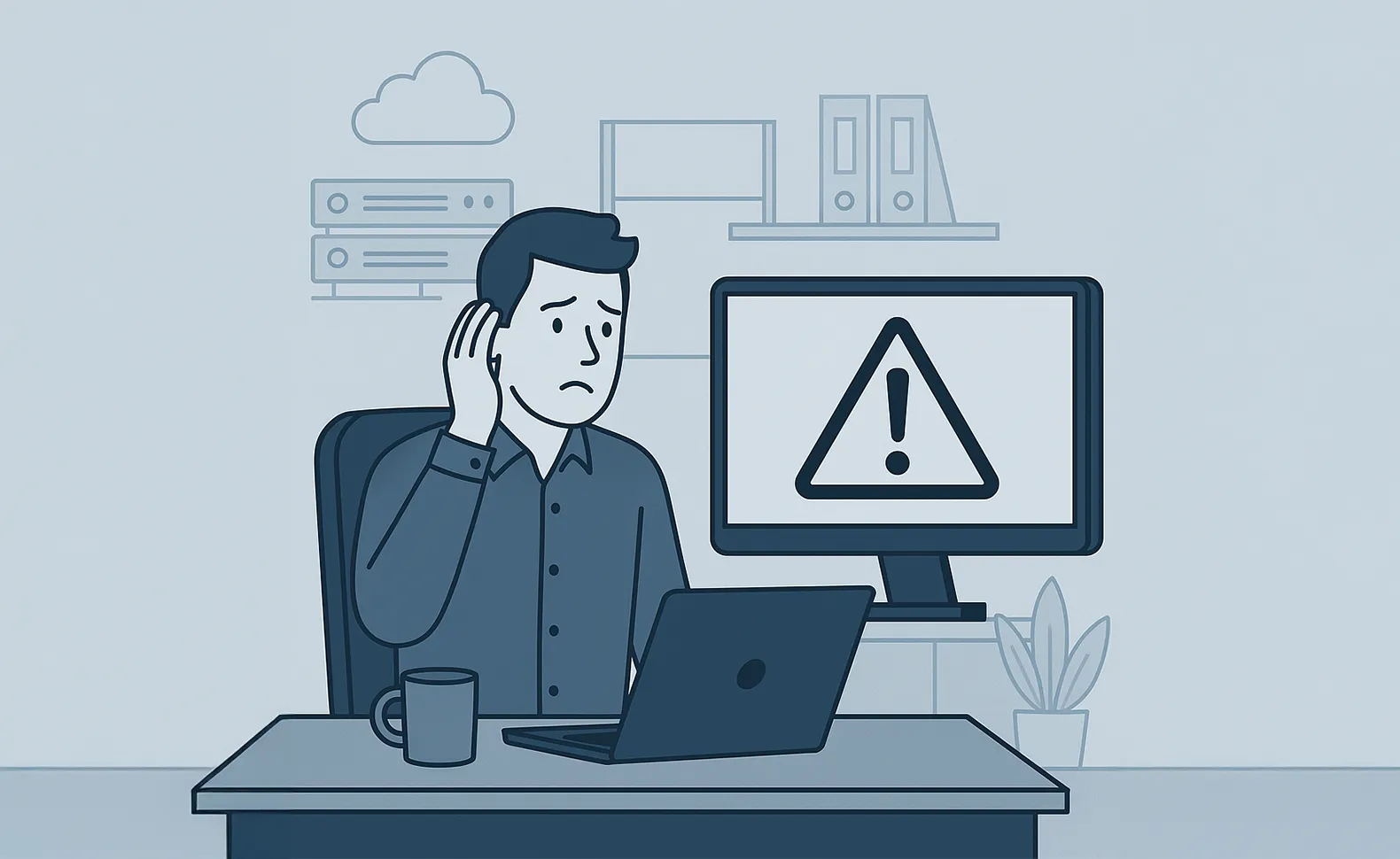The most important thing in brief:

An IT failure can have far-reaching consequences — from short-term productivity losses to long-term image damage. But what does IT failure mean in practice? And how well is your company really prepared for this?
What is an IT failure?
An IT failure describes the sudden or gradual unavailability of IT systems, applications, or infrastructure services. These can include software errors, hardware defects, power outages, or even human error.
Whether you are affected by an IT failure often only becomes apparent when entire departments are at a standstill, data is no longer accessible or communication stalls.
Causes of IT Outages
The reasons for IT failures are manifold — and often underestimated:
- hardware defects: defective hard drives, overheated servers, or aging network infrastructure
- Software errors or updates: broken patches, untested releases
- cyber attacks: Ransomware attacks, DDoS, or phishing
- Power or network outages: even short-term interruptions can have critical consequences
- Incorrect operation by employees: e.g. accidental deletion of important data
- Lack of documentation: Quick recovery is impossible without detailed knowledge of the IT landscape
The consequences of an IT outage for your business
An IT failure can lead your company into a crisis situation within a few hours:
- loss of productivity: Employees are unable to work, processes come to a standstill
- data loss: especially when there is no backup concept
- loss of customer trust: e.g. when support or online system is unavailable
- Image and reputation damage
- expenses: According to studies, serious IT failures cause costs in the six-figure range on average
How prepared are you for this?
The central question is: Can you simulate an emergency — and survive?
Use this short checklist to assess your current situation:
✅ Is there a recent, complete Documentation of your IT landscape?
✅ Are responsibilities for emergencies clearly defined?
✅ Is there a IT emergency plan (Disaster Recovery Plan) before?
✅ Are backups regularly checked and tested?
✅ Is your IT infrastructure documented transparently and comprehensibly?
✅ In the event of a failure, do you know exactly which systems are critical?
If you have to answer “no” to several points, you should take action.
Prevention: Avoid IT failures with Docusnap
Docusnap effectively helps you to minimize the risks of an IT failure:
- Automated inventory: You always know the current status of your infrastructure
- Dependency analyses: critical systems and their interrelationships become visible
- Documentation of emergency plans and recovery strategies
- Keep an eye on access rights: to minimize sources of human error
- Regular reports and visualizations for IT managers
Docusnap helps you not only to create emergency plans, but also to integrate them into your existing IT documentation — up-to-date, comprehensible and audit-proof.
IT failures from history — and what you can learn from them
A look at prominent examples shows how critical the IT failure factor is:
- Facebook (October 2021): A DNS error paralyzed Facebook, Instagram and WhatsApp for several hours — the cause was a configuration error in the backbone network.
- British Airways (2017): A power failure and lack of documentation led to a total IT failure — thousands of flights were cancelled, with costs of over 100 million euros.
- Maersk (2017): A ransomware attack paralyzed the entire IT system — with functioning network and backup documentation, it would have been possible to react more quickly.
These cases show that with clear IT documentation and predictive planning, such as Docusnap enables, IT failures cannot always be avoided, but they can be significantly mitigated.
Conclusion
An IT failure is not a question of if, but of when. Companies that proactively document, analyze and plan today will secure a decisive competitive advantage tomorrow.
With Docusnap, you are prepared for emergencies — and in the best case scenario, avoid them. Also read our blog article ”Failure of IT systems - causes, consequences and prevention“.
The next steps
Start by creating complete and up-to-date IT documentation so that you can react quickly in the event of an IT failure. Docusnap offers you powerful functions for this purpose, such as automated inventory, clear dependency analyses and the ability to easily create and maintain IT emergency plans. See for yourself and make your IT crisis-proof.
Try it now for free


